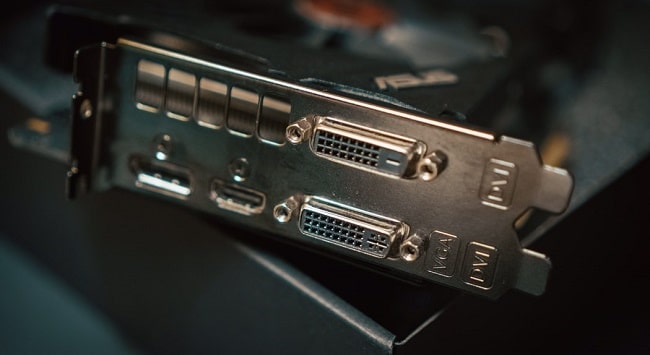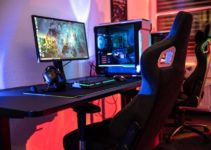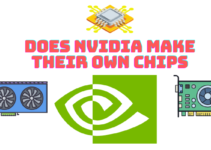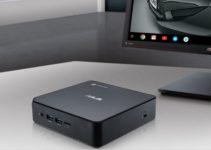- Is Nvidia compatible with AMD processors?
- Some of Nvidia’s most representative product lines
- Does GeForce work with AMD?
- What Nvidia graphics driver is compatible with AMD?
- What is FreeSync?
- What is V-Sync?
- What is G-Sync?
Is Nvidia compatible with AMD processors?

Nvidia is known for groundbreaking display technologies like G-Sync. When the Nvidia card is AMD compatible, either of these two technologies will deliver great picture quality. Nvidia is compatible with AMD processors when the following required conditions are met.
First, the most basic condition for them to work together is that their slots must be compatible with each other. Nvidia is a type of graphics card with a common design is an Express Component Interconnect Express slot called PCI-E for short.
There has been a lot of confusion between these slots and the older ones. So, before buying an Nvidia card, check if your motherboard has this type of slot correctly. The user manual will give you exact information on the type of slot that ADM has, and you can find out all product specifications on both brands’ websites.
Second, the software driver must be compatible with the device driver. When using AMD-based boards, the Nvidia card is compatible with relatively few AMD processors, which can be said to be quite picky about AMD processors. Compared with ATI cards made by AMD itself, the Nvidia card is less compatible.
Hence, if the Nvidia card’s driver doesn’t work, we need to look for other ones. The driver version can be found at any trusted source or on the Nvidia website itself. Before installing a new driver, we have to remember to remove all the old Nvidia drivers from the system for the driver to be homogeneous and functional.
Third, we should be mindful of the power supply. In addition to the motherboard, the power supply is also an important factor in powering the Nvidia card’s performance. Some Nvidia cards require more power through the motherboard interface.
In this case, the battery is not enough to power the Nvidia card but must be plugged directly into the computer’s power supply. This case gets little attention from everyone because it sounds simple. However, in many cases just paying attention to the power source is enough to connect the Nvidia card to the AMD processor’s motherboard.
Your device should have a minimum power rating of 500 watts or more, a 12-volt rating of at least 36 amps or more. Power sources lower than those listed above will not supply enough power for Nvidia graphics cards. You won’t even be able to start your computer without the amperage above.
The question “is AMD compatible with Nvidia?” now has the answer.
Some of Nvidia’s most representative product lines
- Geforce – The graphics processor for gamers, Nvidia is well known for this product line.
- Quadro – Graphical processing engine for CAD workstations and engineering content creation.
- Tegra – System chips for mobile devices.
- Tesla – GPU dedicated to high-end graphics applications in the professional and scientific fields.
- nForce– Motherboard chipset for AMD Athlon and Duron processors.
Does GeForce work with AMD?
Geforce is one of the widely available Nvidia graphics cards in the market. Nvidia Geforce graphics card can completely work with AMD when it satisfies the requirements of power supply, motherboard, optical drive, and device operating system.
First, in terms of power requirements, as well as requirements with Nvidia graphics cards in general, Geforce also needs the same power supply to provide sufficient power for device operations.
The second problem remains the same as for Nvidia cards in general, it’s the slot issue. Geforce as well as other Nvidia graphics cards in general, when you want to work with ADM, you need a PCI-E slot. This is required for Geforce to combine with ADM to create their compatibility.
Third, your device should have a DVD or CD drive ready to install the necessary drivers for the graphics card operation. The latest versions often bring the best features for smooth-running Nvidia graphics cards. Nvidia updates are always free, convenient to update at all times.
The last one is the requirement for the device’s operating system. For Nvidia cards in general and Geforce in particular, the latest driver versions support both 32-bit and 64-bit versions with Windows 7 and Windows 8, Windows Vista, and Windows 10.
What Nvidia graphics driver is compatible with AMD?
To know which Nvidia graphics drivers are compatible with AMD, we can only base on actual user experiences.
According to some small survey statistics, in addition to the following Nvidia graphics drivers, the remaining Nvidia Drivers are compatible with AMD: Nvidia MX150 GFX, Nvidia 391.35, Nvidia EVGA Geforce GT730, Nvidia GTX 1050, Nvidia GTX 1650, Nvidia Geforce GTX 2070, Nvidia GTX 1070…
In addition to the above models, it is possible that the card models can be compatible and work with AMD.
What is FreeSync?
FreeSync is an anti-tearing technology developed by the AMD brand. With this technology, the monitor that supports FreeSync will adjust its scan frequency continuously within the allowed range, so that it coincides with the GPU’s rendering rate (FPS level) to eliminate screen tearing. It is essentially based on the common industry standards of AMD and the Video Electronics Standards Association, so there is no need for proprietary modules like Nvidia’s G-Sync technology.
Since it does not use a proprietary module, FreeSync is easy to apply, even on low-cost monitor models. However, the one downside to this technology is that it cannot function as smoothly as G-Sync.
Now, FreeSync 2 is an improved step that has been introduced, offering lower latency, higher brightness, deeper blacks, and wide color coverage to best support HDR content and LFC frame compensation.
What is V-Sync?
Nearly all games today support this technology. When V-Sync is turned on, the GPU will only output the correct number of FPS coinciding with your screen scan frequency, from which the number of frames will be synchronized. Which frame the GPU outputs, the screen will display that frame, eliminating the overlapping of frames, eliminating screen tearing.
However, this technology has an inherent problem. When your GPU is always powerful enough to output FPS higher than your monitor’s refresh rate, that’s okay, V-Sync will work perfectly. If your GPU outputs a lower FPS than the scan rate, it will cause lag.
For example, your screen has a 60 Hz refresh rate, the power of the GPU will be “locked” so that it only outputs exactly 60 FPS. Also in the case of you in the dark smoke combat, sometimes the GPU rendering speed is slower than the scanning frequency of the screen, or rather the “rendering” speed of the GPU does not keep up with the speed. frame scan, the scan will be skipped and the image displayed on the next scan of the monitor. And that causes an uncomfortable and noticeable “stutter” feeling, especially with low-frequency screens.
In short, the Nvidia graphics card is an effective tool in providing the best visual experience for users. However, not all Nvidia graphics cards are compatible with AMD. Also, AMD-compatible Nvidia graphics cards need certain conditions outlined above.
What is G-Sync?
To completely overcome the disadvantages of the Nvidia brand introduced G-Sync technology. Monitors that support G-Sync must have a module to communicate with the GPU, every time the GPU finishes drawing a frame it will notify the G-Sync module, and when the G-Sync module receives a signal, it tells you to allow the screen to refresh the image. Thanks to that, each frame will be output perfectly and completely. Latency is also lower than V-Sync.
The downside of this technology is that you must use an Nvidia GPU. At the same time, due to the use of a special module, the models that support G-Sync will also cost quite a bit compared to the same specifications but are not equipped.
Earlier this year, Nvidia had a move to “open up” G-Sync, making all monitors that support frame sync technology (FreeSync) can prevent screen tearing. This technology is called G-Sync Compatible). However, the screen also has “this screen that screen”, currently there are only a few screen models qualified to be certified by Nvidia to be G-Sync Compatible.
Besides, there is still another G-Sync standard, G-Sync Ultimate, these are the screen models that can be said to be the “hottest” on the market today, not only perfect against tearing, but also must be certified. VESA’s HDR1000, which passed more than 300 tests by Nvidia to be recognized.







No Responses